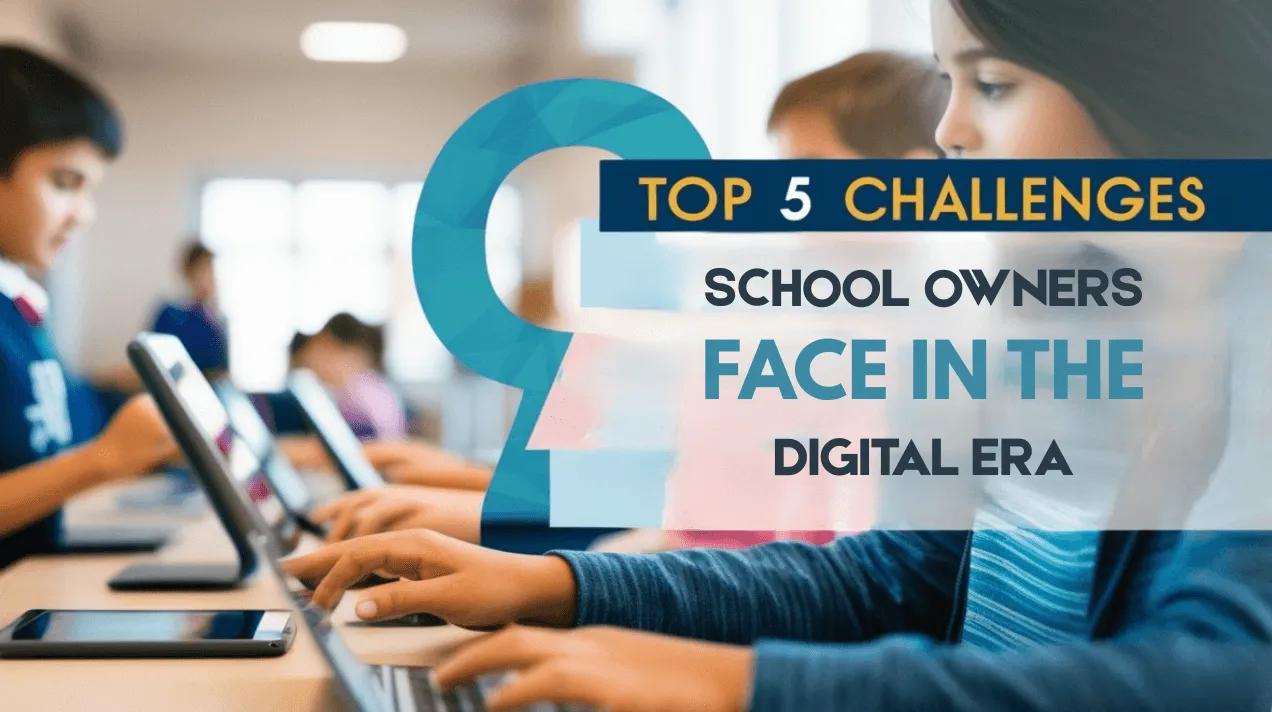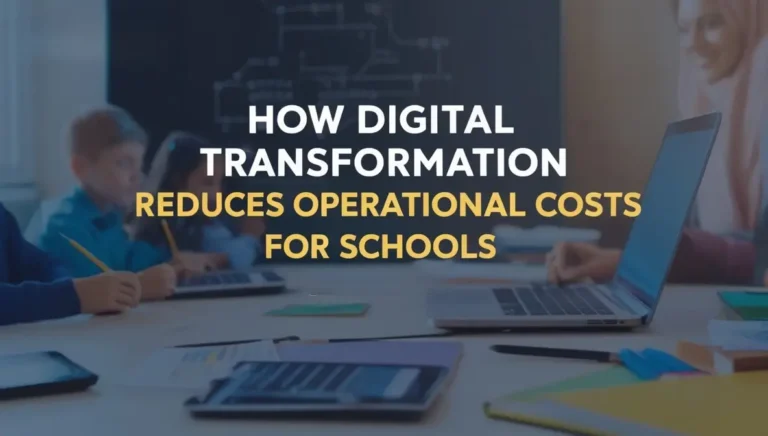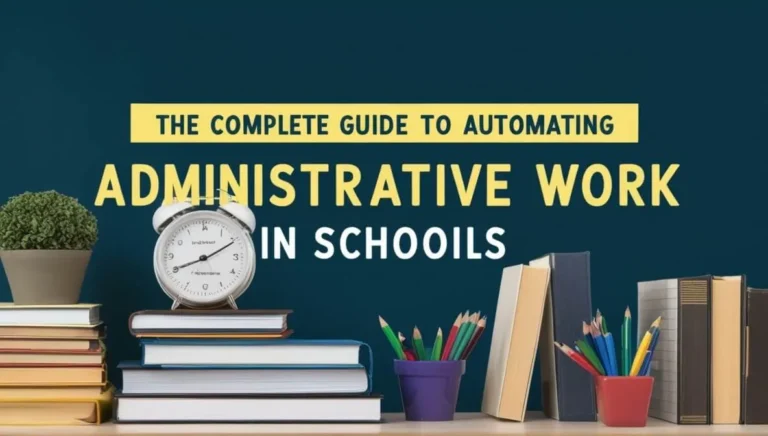Table of Contents
- Introduction
- What are school digital transformation challenges
- Top 5 school digital transformation challenges school owners face
- Cross-cutting issues that amplify school digital transformation challenges
- A simple 6-step roadmap for school owners to beat these challenges
- Example implementation timeline (12 months)
- Cost estimate (example for a 300-student private school)
- Tools and approaches that reduce risk
- Case study (mini)
- Measuring success: KPIs to track
- FAQs
- What are the fastest wins for school digital transformation challenges?
- How do I budget for digital transformation and avoid overspending?
- Can small schools afford to tackle school digital transformation challenges?
- How do we protect student data when using EdTech?
- How long before we see learning improvements after addressing school digital transformation challenges?
- Final checklist for school owners
- Conclusion
- Are you ready – To take the leap
Introduction
Schools today must move fast. Parents demand modern learning. Students expect digital tools. Yet school owners face real friction. From patchy internet to teacher resistance, these problems slow progress. This post lays out the school digital transformation challenges that matter most. You’ll get clear causes, proven fixes, examples, and a roadmap you can adapt. If you’re a principal, owner, or decision-maker, this guide turns friction into momentum. We’ll also highlight common EdTech adoption challenges and what to do next.
Why this matters now
First, digital learning is no longer optional. Second, funding and policy support are growing. Third, families compare schools by technology readiness. Consequently, understanding school digital transformation challenges helps you protect enrolment, improve learning outcomes, and future-proof your institution.
How I approached this guide
I synthesized global research, India-specific education data, and vendor best-practices. The problems listed here show up again and again in real schools. The solutions are practical and low-cost where possible. Use them as a checklist and implementation playbook.
What are school digital transformation challenges
The phrase school digital transformation challenges covers barriers that stop a school from using technology to improve teaching, learning, and operations. These barriers are technical, human, financial, and strategic. They include:
- Poor connectivity and devices
- Insufficient teacher training
- No clear digital strategy
- Budget and procurement hurdles
- Data privacy, security, and compliance concerns
In short, technology alone doesn’t transform learning — people, process, and policy do. Below we unpack the top five challenges school owners face in the digital era and offer practical fixes.
Top 5 school digital transformation challenges school owners face
Below are the five problems that appear most often. For each, I explain why it matters, typical symptoms, and practical solutions you can start this term.
1. Infrastructure & connectivity: the foundation of digital learning
Why it’s a school digital transformation challenge. Without reliable internet and adequate devices, EdTech can’t be used effectively. The result: teachers avoid new tools and students get inconsistent experiences.
Common symptoms
- Frequent downtime during lessons
- Large groups sharing one device
- Slow LMS access and video buffering
Quick fixes
- Audit your connectivity: log speeds during school hours for one week.
- Prioritize critical areas: admin, libraries, exam halls.
- Use hybrid deployment: local caching of resources and offline-first apps.
Investment roadmap (example table)
| Phase | What to buy | Impact | Cost priority |
|---|---|---|---|
| 1 — Stabilize | Reliable school Wi‑Fi, 1 router per 1–2 classrooms | Fewer disruptions, teacher buy-in | High |
| 2 — Equip | Shared device carts (laptops/tablets) | Regular digital lessons | Medium |
| 3 — Scale | 1:1 device plan + school LMS | Personalized learning | Low/long-term |
Example: A small school replaced one old router with a dual-band enterprise-grade unit and moved resource-heavy apps to a classroom-level cache. Result: video lessons ran smoothly and teacher complaints dropped within two weeks.
2. Budget, procurement and Total Cost of Ownership (TCO)
Why it’s a school digital transformation challenge. Many schools buy tech without budgeting for training, maintenance, and replacement. The result: equipment lies unused or breaks down.
Typical issues
- Buying cheap devices that fail quickly
- No service contract or maintenance plan
- Fragmented procurement causing compatibility issues
Smart procurement checklist
- Estimate TCO: include training, licences, and annual maintenance.
- Prefer bundles: device + warranty + training.
- Pilot before scale: run a 3–6 month pilot with measurable KPIs.
Cost-saving tactics
- Lease devices instead of buying outright.
- Use open-source LMS and free teacher training modules.
- Pool purchasing with nearby schools to get volume discounts.
3. Teacher training and change management — the human side of the problem
Why it’s a school digital transformation challenge. Technology fails when teachers don’t adopt it. Resistance can come from fear, time constraints, or unclear expectations.
Symptoms
- Low usage of LMS or EdTech platforms
- Teachers revert to paper-based methods
- Complaints about screen time and workload
Practical solutions
- Micro-training: 20–30 minute weekly sessions focused on one tool.
- Peer mentoring: pair tech-savvy teachers with peers.
- Time-back model: free up one period per week for teachers to learn.
Sample 90-day teacher adoption plan
- Launch week: hands-on workshop + simple tasks.
- Weeks 2–6: micro-lessons and peer observations.
- Weeks 7–12: use data to reward progress and iterate.
4. Data privacy, security and compliance
Why it’s a school digital transformation challenge. Schools collect sensitive data — student records, health info, assessments. Mishandling leads to legal, reputational, and safety risks.
Common risks
- Weak passwords and shared logins
- Unvetted third-party EdTech storing data offsite
- No data retention or deletion policy
Immediate steps
- Enforce unique logins and two-factor authentication.
- Create a simple data inventory: what data, where stored, who can access it.
- Read vendor privacy policies and insist on data processing agreements.
Longer-term actions
- Implement role-based access controls
- Train staff on phishing and social engineering
- Have an incident response playbook
5. Curriculum alignment and assessment integrity
Why it’s a school digital transformation challenge. Rolling out tech without aligning it to curriculum goals wastes time. Similarly, digital assessments raise questions about cheating and validity.
Problems you’ll see
- Digital tools used as digital worksheets (no pedagogical shift)
- Teachers unsure how to assess deeper skills online
- Concerns about academic integrity during remote exams
How to fix it
- Map each EdTech tool to specific learning outcomes.
- Use blended assessment: combine proctored assessments with project-based tasks.
- Use analytics to spot irregularities, then apply human judgement.
Practical example: A school moved from multiple-choice-only online tests to portfolios and micro-projects. They used the LMS analytics to track participation and combined it with teacher observations.
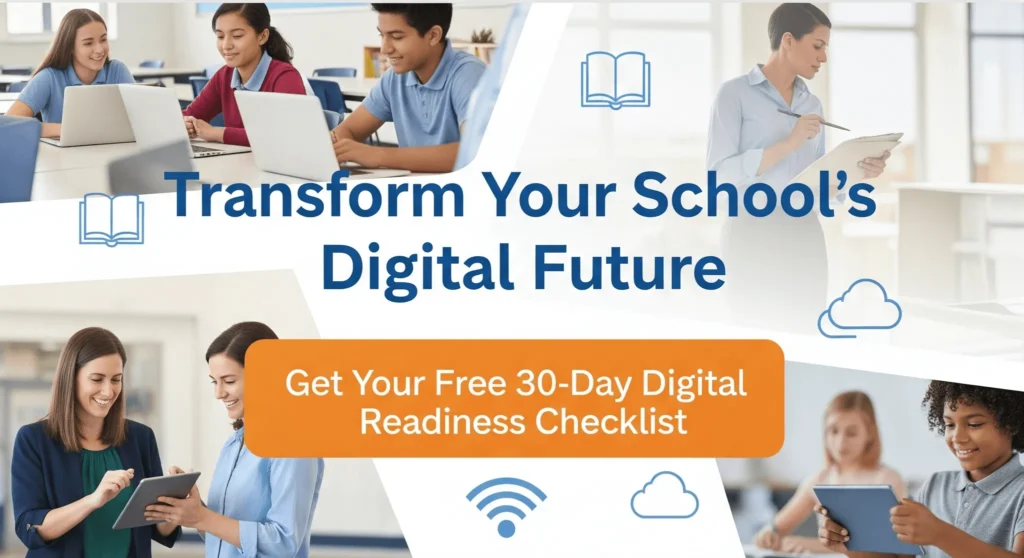
Cross-cutting issues that amplify school digital transformation challenges
Some issues make all five challenges worse. Plan for these too.
- Leadership and vision: Without a clear strategy, projects stall.
- Vendor fragmentation: Too many niche tools create admin overhead.
- Equity and the digital divide in education: Low-income students may lack devices or home internet.
- Policy inertia: Long procurement cycles and outdated rules slow innovation.
Quick governance checklist
- Set a 1–3 year digital strategy with measurable KPIs.
- Centralize vendor procurement and standardize integrations.
- Create an equity fund for devices for needy students.
A simple 6-step roadmap for school owners to beat these challenges
- Assess: Run a 30-day digital readiness audit (connectivity, devices, skills).
- Plan: Create a one-page digital strategy with budget, owners, and KPIs.
- Pilot: Start with one grade or one subject for a 90-day pilot.
- Train: Implement weekly micro-training and peer coaching.
- Secure: Do a basic security and data-protection sweep.
- Scale: Use pilot data to refine procurement, then scale in phases.
Example implementation timeline (12 months)
- Months 0–1: Readiness audit and leadership alignment.
- Months 2–4: Pilot (devices + LMS + teacher training).
- Followed by Months 5–6: Evaluate, adjust procurement and policies.
- Lastly Months 7–12: Scale to additional grades, run parent orientation, measure outcomes.
Cost estimate (example for a 300-student private school)
- Connectivity upgrades: INR 2–4 lakh (one time)
- 15 shared tablets/laptops: INR 3–6 lakh (depending on model)
- LMS subscription (annual): INR 50k–1.5 lakh
- Teacher training & professional development: INR 50k–1.5 lakh
- Annual maintenance & licenses: INR 1–2 lakh
Total first-year ballpark: INR 7–15 lakh. Note: leases, CSR partnerships, and phased rollouts reduce upfront cost.
Tools and approaches that reduce risk
- Choose offline-first apps for low-connectivity areas.
- Use single sign-on (SSO) to reduce login fatigue.
- Prefer platforms with strong role-based access and audit logs.
- Use analytics dashboards to monitor engagement and intervention needs.
Case study (mini)
A 450-student school in a tier-2 city had low LMS adoption. Problem: slow Wi‑Fi, no training, and multiple free apps. They implemented a 90-day pilot: upgraded Wi‑Fi to campus-grade, standardized on one LMS, and ran 12 weekly micro-training sessions. Outcome: LMS active users grew from 8% to 72% within three months. Attendance tracking moved online; teachers reported time savings and higher parental satisfaction.
Measuring success: KPIs to track
- Teacher LMS active users (% of staff logging in weekly)
- Student device access rate (devices per 100 students)
- Lesson digital delivery rate (% lessons with a digital component)
- Parent satisfaction score (survey)
- Reduction in downtime (minutes per week)
FAQs
What are the fastest wins for school digital transformation challenges?
Start with connectivity and teacher micro-training. Combined, these two moves quickly remove friction and show value. Use an offline-first LMS if connectivity is unreliable.
How do I budget for digital transformation and avoid overspending?
Calculate Total Cost of Ownership (TCO) including training and maintenance. Pilot first. Consider leasing devices and pooled procurement.
Can small schools afford to tackle school digital transformation challenges?
Yes. Prioritize high-impact, low-cost steps: stabilize Wi-Fi, pick one LMS, and start micro-training. Use phased rollouts and partnerships.
How do we protect student data when using EdTech?
Enforce unique logins, two-factor authentication, and sign data processing agreements with vendors. Maintain a simple data inventory and train staff on basic cyber hygiene.
How long before we see learning improvements after addressing school digital transformation challenges?
You can see operational improvements (attendance, communication) in 2–3 months. Academic outcomes usually take a full term (3–6 months) depending on fidelity of implementation.
Final checklist for school owners
- Run a 30-day digital readiness audit.
- Create a one-page digital strategy (owners, KPIs, budget).
- Start a 90-day pilot in one grade/subject.
- Run weekly 20–30 minute micro-training for teachers.
- Implement basic security: unique logins and 2FA.
- Set up a device-equity fund for vulnerable students.
Conclusion
School owners who proactively address school digital transformation challenges gain a competitive edge. The path is not purely technical. It demands strategy, people-first training, sensible procurement, and clear policies. Start small, measure often, and scale with data. Tackle these five challenge areas and you’ll move from fragmented technology to sustained, measurable learning improvement. Remember: technology is a tool; the transformation happens when people use it well.
Are you ready – To take the leap
Ready to tackle your school’s digital future? Contact Legacy EdTech for a free 30-day digital readiness checklist and a tailored 90-day pilot plan for your school or institute. Let’s convert your school digital transformation challenges into measurable growth — enrollments, outcomes, and reputation.



